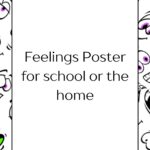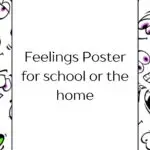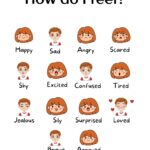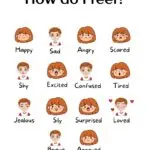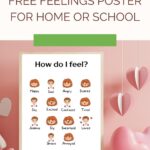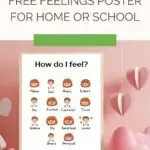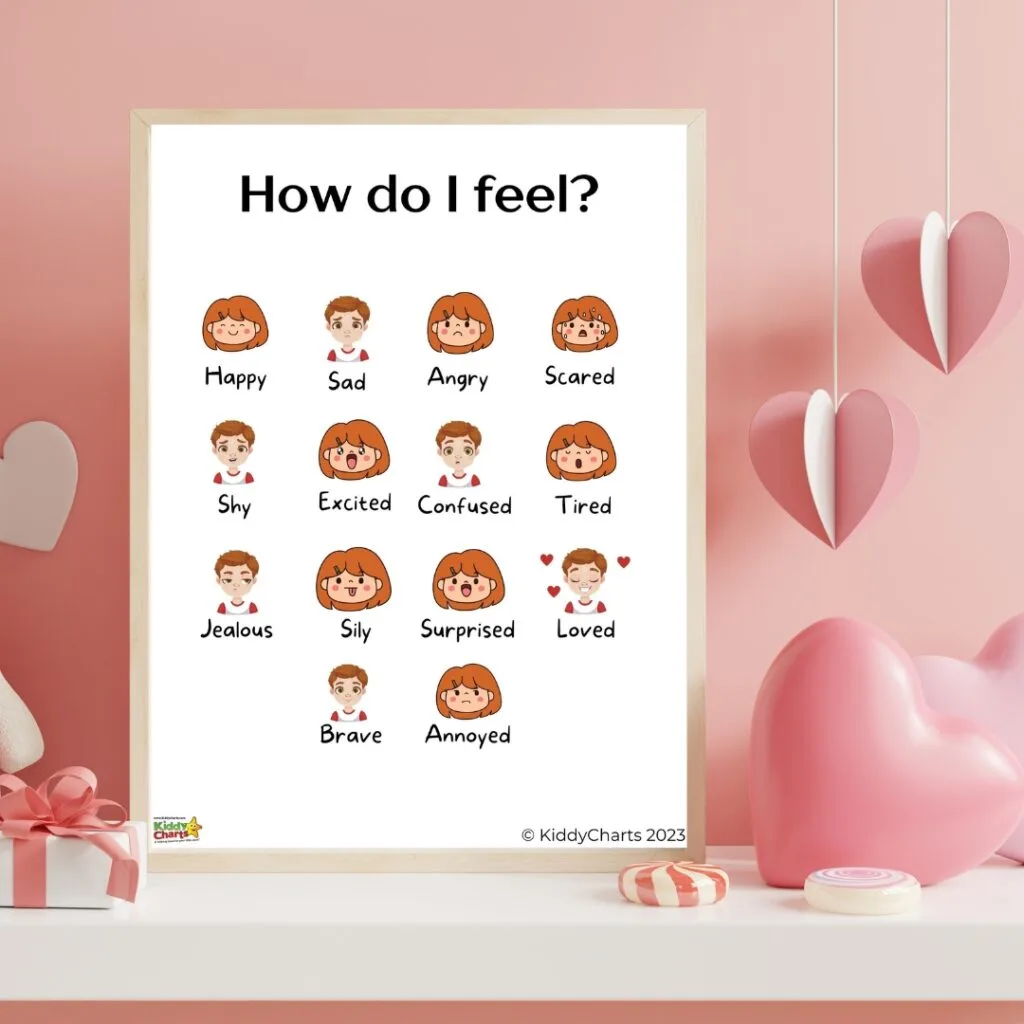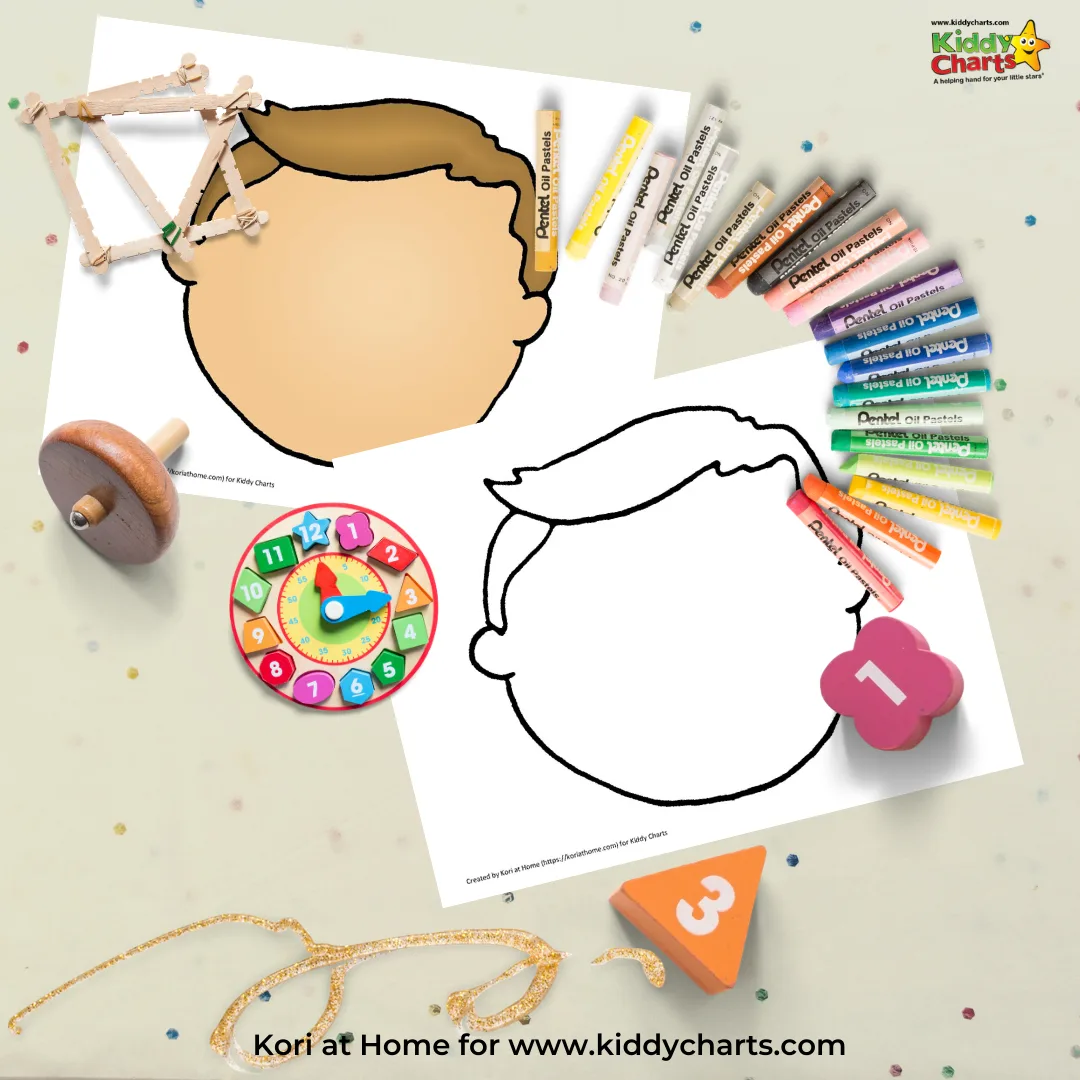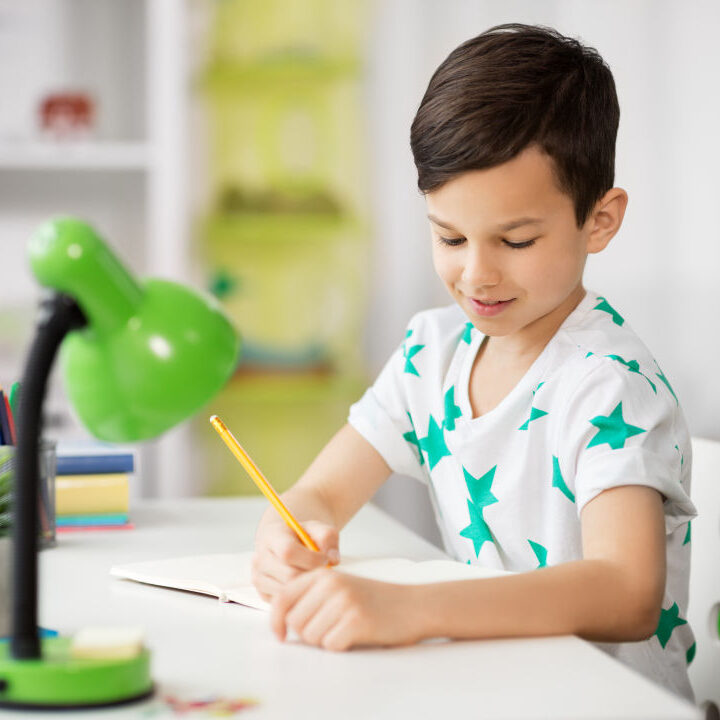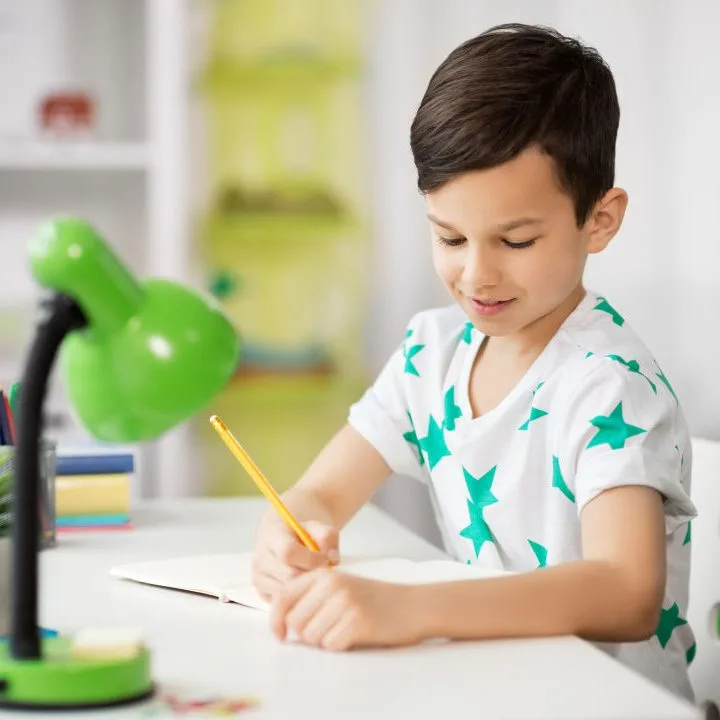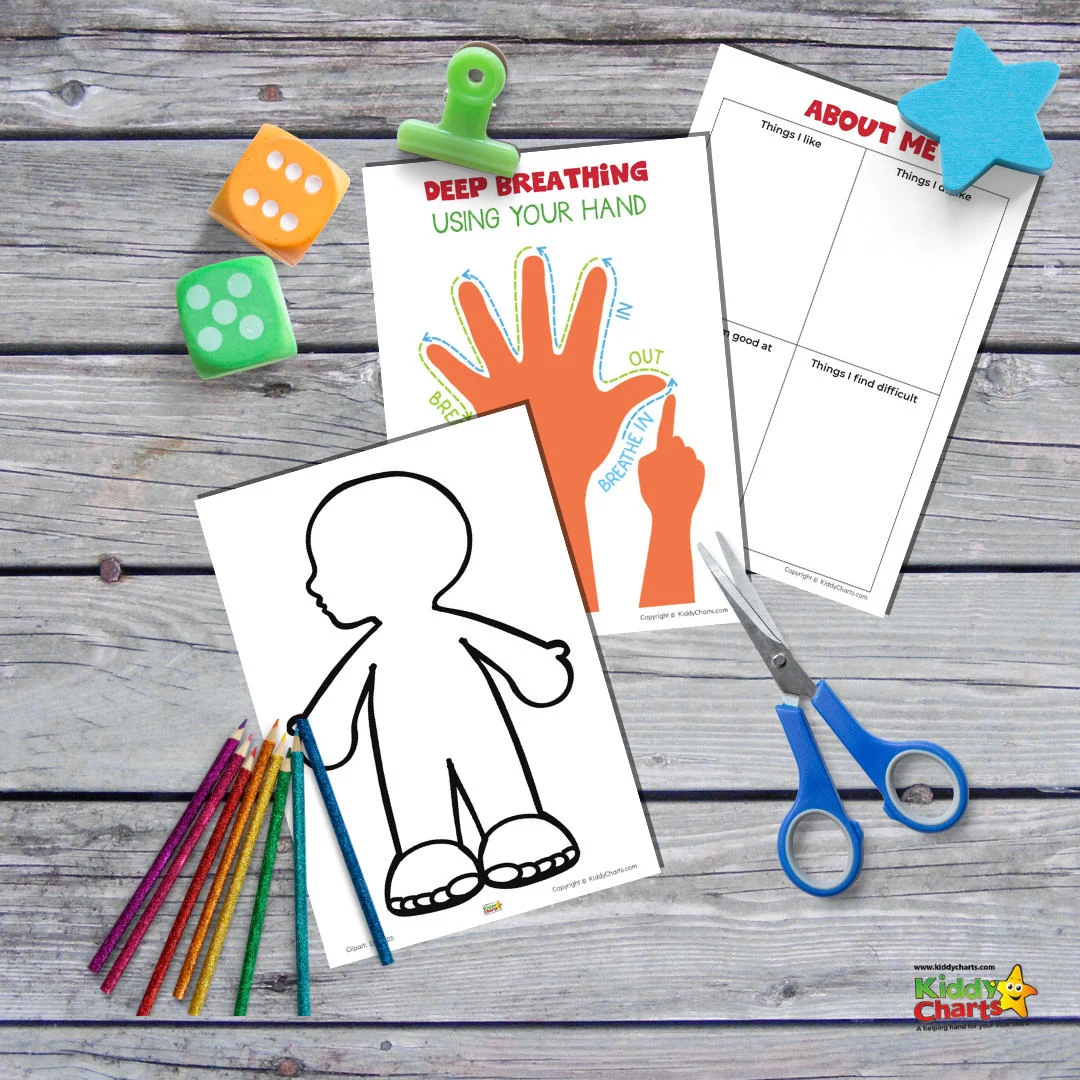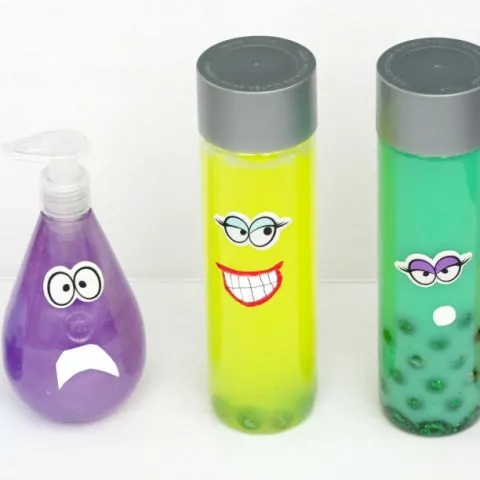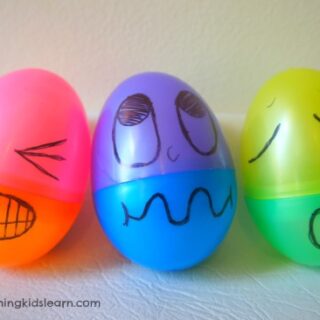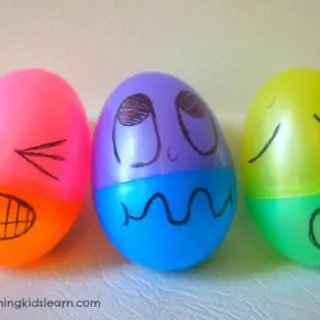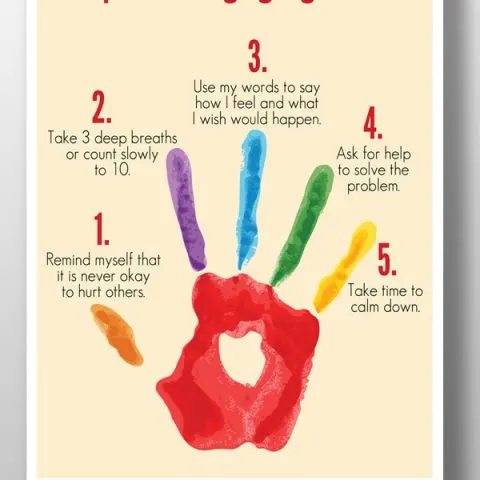This is rather a simple little printable for you today; it is only one pay, but it is incredibly important. It is a feelings poster to help children understand what feelings look like for people in their lives, as well as for themselves. Though it can be more of a challenge to understand your emotions when you are younger, or neurodivergent, it is a very important skill to learn early on. This poster gives children a reference point to help with this.


This feelings poster shared is a useful free printable that can help children identify and understand different emotions. Understanding emotions is a key part of childhood development and can have many benefits.
What is the feelings poster printable?
The feelings poster is a free printable chart that displays common emotions using facial expressions and simple words through cartoon characters. The poster includes a range of positive emotions like happy, excited, loved, and surprised.
Covering challenging emotions like sad, angry, scared, confused, and annoyed, itt is perfect to hang up on the wall in your home or your classroom. You could even add it to the wall alongside some framed prints in your child’s bedroom?
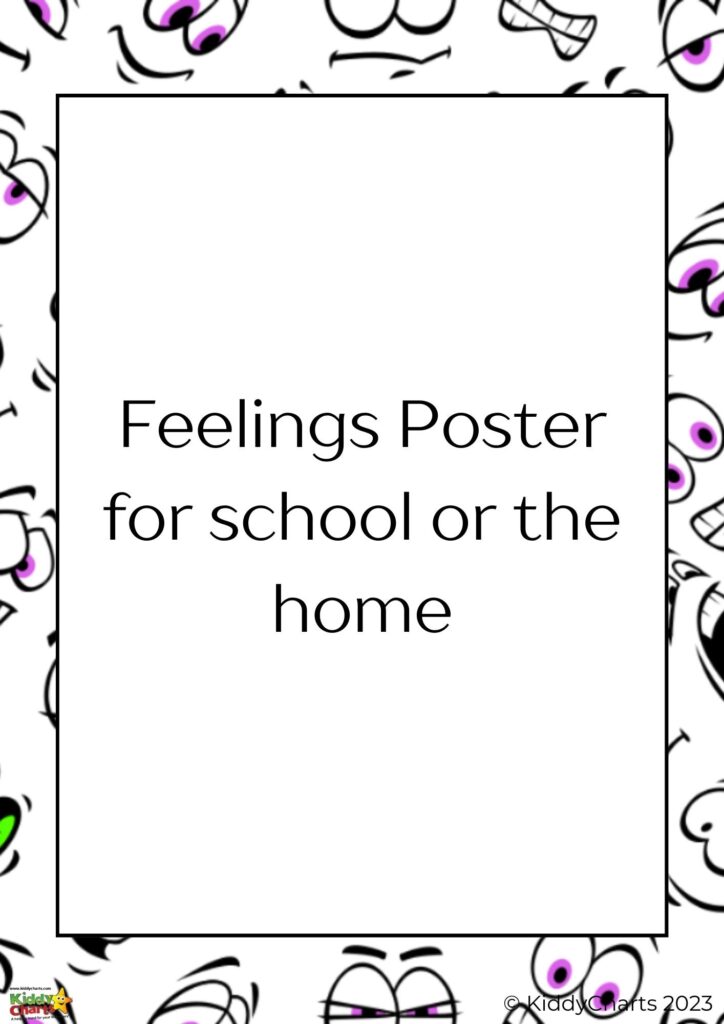
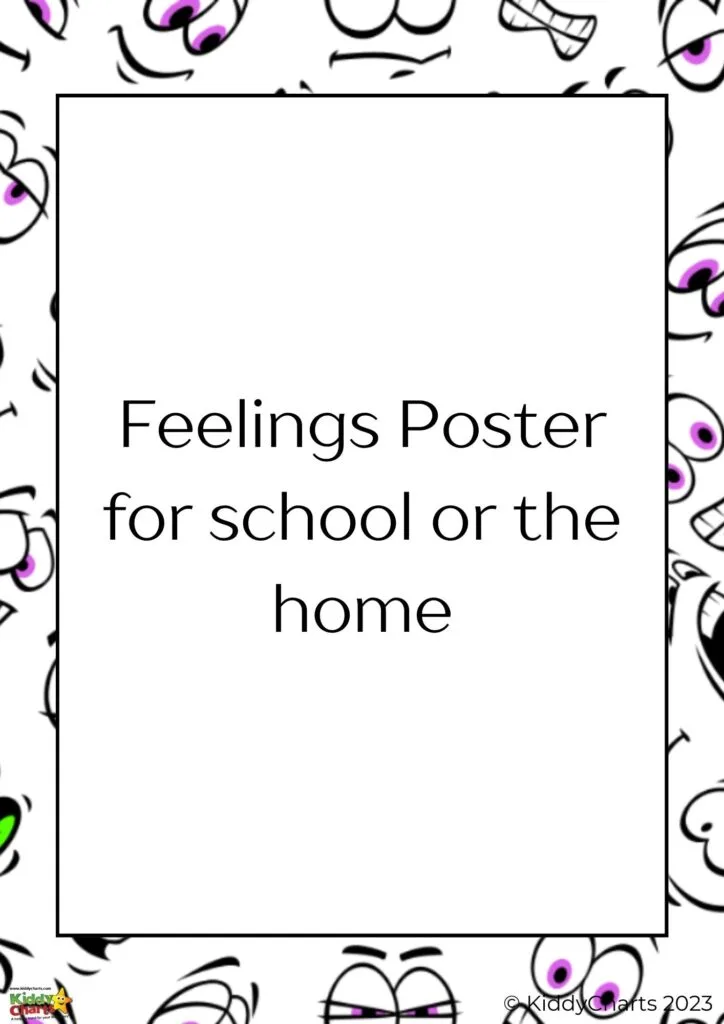

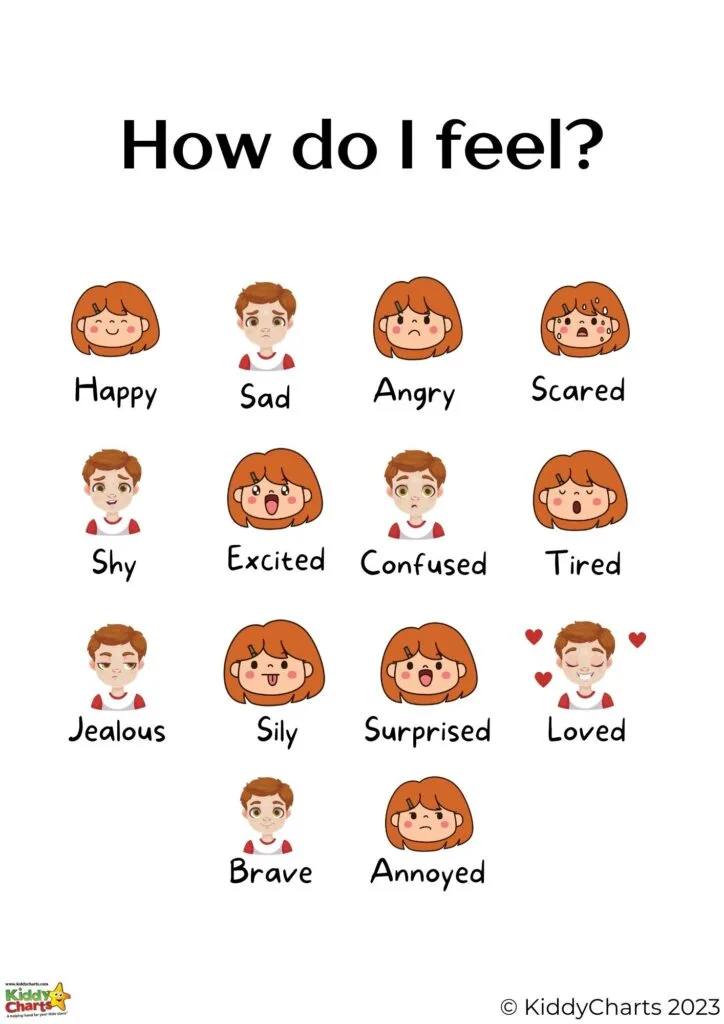
The printable shows a diverse range of faces expressing each feeling. This representation is important to help kids associate the emotions with real facial expressions they may see on those around them. Because the words are large and clear, it can also work as a little introduction to early literacy skills.
The poster is suitable for assisting children aged approximately 3-8 years old. It can be used in schools, homes, counselling offices, and more. The simple, clear design makes it versatile for a variety of uses.
Why is it important to teach kids about recognising their feelings?
Learning to identify and label feelings from a young age provides many benefits for our children’s development:
- Develops emotional intelligence: Being able to recognize different emotions in themselves and others builds a crucial skill called emotional intelligence. This supports better understanding of their own and people’s behaviours and needs.
- Supports mental health: Children who can identify their feelings are better equipped to express themselves and ask for help when experiencing unpleasant emotions like anger, sadness, or fear. This protects mental health.
- Improves social skills: Understanding emotions helps kids pick up on social cues, communicate their feelings verbally, and show empathy. This boosts relationships with others.
- Enables self-regulation: Children who can recognise rising emotions are able to implement calming techniques more easily. This allows better anger management and self-control.
- Builds confidence: Accurately naming feelings provides kids with a sense of competency over their inner world. This fosters self-confidence, and helps our children to feel empowered.
For kids with neurodivergence such as autism spectrum disorders and ADHD, learning about emotions is especially essential, as they may struggle to recognise facial expressions instinctively. Check out the article we have on emotional dysregulation in ADHD for more information.
Tips for using the feelings poster
Here are some tips on how to use the feelings poster effectively to teach children about emotions:
- Point to the different faces and ask your child to name the emotion. Do praise correct identifications, and support them gently for emotions they don’t recognise,
- Pick one emotion to focus on each day. Encourage your child to notice that feeling within themselves and others. Discuss what led to the emotion. You could even chat about this at the end of the day, maybe even utilising other sensory items to help and support your child. For example, you can get a personalised pillow for the bedroom which helps support emotional development – maybe including some of your child’s favourite pictures on it to talk about what emotions those pictures instil in your child, referring to the poster at the same time,
- Keep the chart somewhere visible like on the fridge, or on the wall in their bedroom. That was, you, or they, can refer back to it during emotional moments to help your child put words to what they are experiencing,
- Make additional materials like feeling face flashcards to practice identifying the emotions through play. Games help reinforce learning. Check out some of the emotions related ideas on the site, we have linked to a few below as well for you,
- Use the poster as part of a calming corner or book nook so your child can sit with the emotions if they are feeling overwhelmed or dysregulated,
- Invite your child to make their own poster with additional feeling words like frustrated, embarrassed, proud etc. This really helps to extend their emotional vocabulary,
- Role play various scenarios and ask your child to point to the face showing how the character feels. Adapt for their age and interests. Talk about books and the characters within them in the same way, and help your child to point to the image relevant to the book character, and
- In the classroom, a teacher could utilise this poster during social-emotional focused lessons and activities. Referring to it consistently to help show different emotions to children.
How to download the poster
Making sure children understand basic emotions, facial expressions, and how to verbalise their feelings provides lifelong benefits for development, self-regulation, and relationships. Simple printables like the feelings poster are handy tools for reinforcing this crucial learning. With some guided practice, parents and teachers can help set any child up for success.
To download this feelings poster, just click on the button or the image below and it is yours:
If you would like other ideas that are focused on children’s emotions on the site, we do have a few more that might be relevant to you. As well as the ideas below, the heart-based emotion book for kids, and emoji activities complement this poster extremely well.
Here are some other ideas to help children to understand and cope with their feelings and emotions.
How to help your kids recognise their emotions: Free printable #31DaysOfLearning
A printable to help kids understand what feelings they are having.
Anxiety in kids
Ideas from KiddyCharts to help with kids expressing themselves, and focusing on improving mental health.
Positive writing prompts for kids emotional development #31DaysOfLearning
Writing prompts for children that focus on feelings, and emotional development.
31 Days Of Learning
Find all of our 31 Days of Learning events on one page! Print out our calendar and work your way through each activity! Have fun!
Friendship mindful activity for kids: Friends who lift my spirits most
Simple mindful activities for kids focusing on friends that lift us up.
How about the following from off KiddyCharts too?
Activities to help your kids with their emotions
If you need more ideas to help your kids deal with their emotions then these posts are worth checking out and trying out.
Emotions Discovery Bottles Inspired By Disney’s Inside Out
Help your kids recognise their emotions with these fun emotions discovery bottles inspired by Disney's Inside Out.
Tool for teaching emotions in kids
Use these tools to help teach kids about emotions.
5 Steps to Managing Big Emotions: Printable
Join teacher Christie Burnett in this post where she shares 5 steps to managing big emotions in kids. There's also a free printable!
We’d love to see you again – so do sign up to our weekly newsletter:
Thanks for stopping by to find out about our feelings poster; we hope you come back soon.
Take care,
Helen
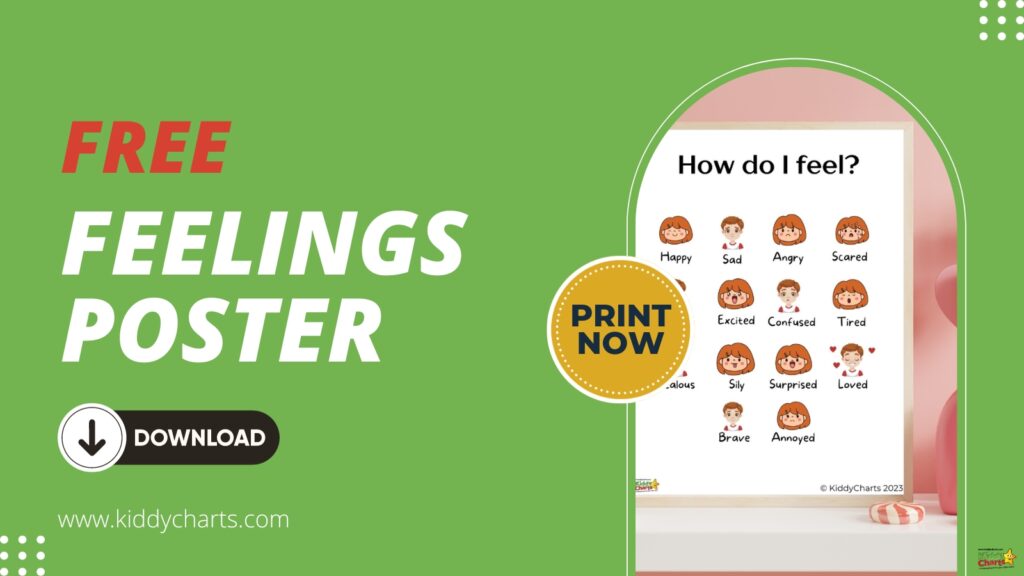
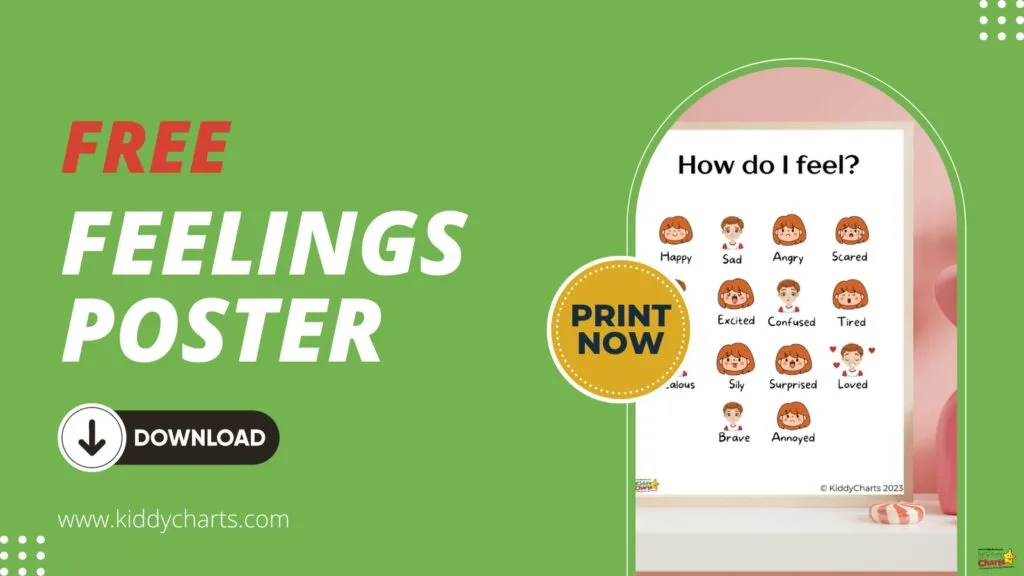
This is a collaborative post.

